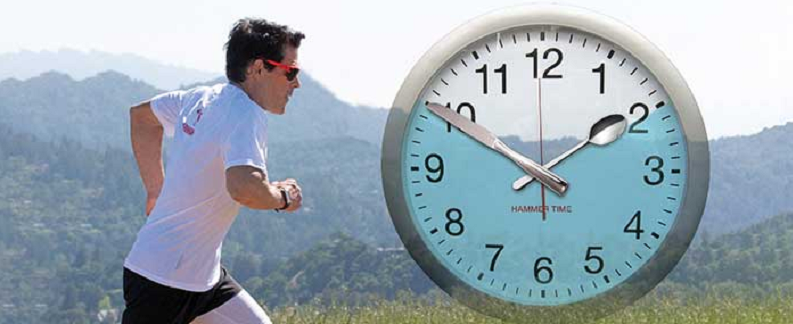
In the world of fitness, the term “fasting cardio” has been making the rounds, generating a lot of discussion and debate. But what is fasting cardio, and more importantly, does it truly benefit your health and fitness goals? Here we dive deep into the science behind fasting cardio, breaking down the biology, the research, and the touted benefits.
Contents
The Concept of Fasting Cardio
Before getting into the science and benefits of fasting cardio, let’s ensure we have a solid understanding of the concept itself. The idea of fasting cardio ties into broader trends around intermittent fasting and exercise, and its roots can be traced back to traditional health practices.
Definition of Fasting Cardio
Fasting cardio is a fitness methodology that pairs intermittent fasting with cardiovascular exercise. The principle here is that exercising after an extended period of not eating – typically overnight – allows your body to tap into stored fat for energy more readily, potentially leading to enhanced weight loss and other health benefits.
Detailed Explanation of Fasting Cardio
Fasting cardio revolves around the idea of performing your cardiovascular exercises during a fasting state. This typically means after an extended period of not eating, which, for many people, is after a night of sleep and before breakfast. While the concept may seem straightforward, the processes that occur within your body during this state are more complex. When you’re fasting, your body doesn’t have readily available glucose from recent meals to use as fuel. Therefore, it’s believed to tap into stored fat for energy, leading to potentially enhanced fat burning and weight loss.
The Biological Processes Involved
At the core of fasting cardio is the body’s metabolic response to fasting and exercise. When you fast, your body experiences several metabolic shifts, primarily a drop in insulin levels, and an increase in growth hormone and glucagon levels. These changes trigger the mobilization of stored body fat, making it available as fuel. When you engage in cardio exercise during this state, you’re using this released fat for energy.
Traditional Views on Fasting Cardio
Historically, the belief in many fitness circles was that eating a meal, particularly one rich in carbohydrates, before a workout was essential to provide your body with the energy needed to perform the exercise. However, over time, as our understanding of the body’s metabolism has evolved, and with the rise in popularity of intermittent fasting, this view has been challenged. Now, more and more people are exploring the potential benefits of working out on an empty stomach, leading to the trending practice of fasting cardio.

The Science Behind Fasting Cardio
With a clearer understanding of what fasting cardio entails, it’s time to take a closer look at the science behind it. By examining the physiological responses to fasting and exercise, and reviewing the research conducted on this topic, we can start to draw some conclusions about the potential effectiveness of this practice.
Physiology of Fasting and Exercise
When we combine the physiological processes of fasting with exercise, interesting things happen within our bodies. Let’s explore how fasting impacts our metabolism and muscle mass and how this relates to exercising.
Impact on Metabolism
When fasting, insulin levels drop while glucagon and growth hormone levels increase. This triggers lipolysis, the breakdown of stored fats in our bodies into fatty acids. These fatty acids are then released into the bloodstream and transported to various cells for energy use. In a state of cardio exercise, the demand for energy rises, increasing the likelihood of these fatty acids being utilized, potentially aiding in fat loss [1].
Impact on Muscle Mass and Body Composition
A common concern about fasting cardio is its potential impact on muscle mass. When glycogen stores are depleted, the body may start breaking down proteins in muscles for energy, a process called gluconeogenesis. However, growth hormone, which increases during fasting, has muscle-preserving effects and may help counteract this [2].
The exact impact on muscle mass and overall body composition will depend on various factors, including the intensity and duration of the workout, overall nutrition, and individual metabolic responses.
Research on Fasting Cardio
Understanding the biological processes is only half the story. To fully grasp the potential benefits of fasting cardio, we need to look at the research that has been conducted in this area.
Key Studies and Findings
There have been several studies investigating the effects of fasting cardio, with varying results. Some research indicates that exercising in a fasted state can burn up to 20% more fat than exercising after a meal. However, it’s important to note that the total amount of energy expended (calories burned) generally remains the same, whether you’re fasted or fed [3].
Other research has found that fasted exercise can improve metabolic flexibility – the body’s ability to switch between burning carbs and fats for fuel, which could potentially lead to improved body composition over time.
Limitations of Existing Research
While these findings are promising, it’s crucial to understand the limitations of the existing research. Many studies have been small-scale or short-term, and not all have found significant differences between fasted and fed cardio. Furthermore, the research often doesn’t account for other factors that can affect fat loss, such as total daily calorie intake and expenditure, the intensity and type of exercise, and individual genetic factors. Thus, more comprehensive research is needed to conclusively determine the effectiveness of fasting cardio [4].

Benefits of Fasting Cardio
Now that we’ve established the science behind fasting cardio, let’s dive into the potential benefits. As with any fitness regimen, results can vary greatly depending on numerous factors, including the individual’s overall health, the nature and intensity of the exercise, and diet.
Weight Loss and Fat Burning
One of the most touted benefits of fasting cardio is enhanced weight loss and fat burning. As we’ve explored earlier, exercising in a fasted state may increase fat utilization as a fuel source. This could lead to a greater loss of body fat over time, especially when coupled with a balanced diet and a consistent exercise regimen.
Improved Metabolic Health
Fasting cardio might also have benefits for metabolic health. Several studies suggest that it can increase insulin sensitivity, which is a crucial factor in preventing type 2 diabetes and metabolic syndrome. Furthermore, fasting cardio may also enhance metabolic flexibility, the ability of your body to switch between burning carbohydrates and fats for fuel. This can potentially lead to better energy utilization and improved body composition in the long run.
Enhanced Cardiovascular Health
Regular cardiovascular exercise of any kind is known to benefit heart health, and fasting cardio is no exception. Some research suggests that fasting cardio might improve blood lipid profiles by reducing total cholesterol and triglycerides, thus potentially lowering the risk of heart disease.
Potential Benefits for Brain Health and Longevity
Emerging research suggests that fasting can stimulate the production of a protein called brain-derived neurotrophic factor (BDNF), which plays a vital role in brain health. Combining fasting with cardio exercise might amplify this benefit, contributing to better cognitive function and possibly even longevity. However, more research is needed in this area to draw conclusive results [5].
Personal Stories and Testimonials
While scientific evidence is paramount, personal experiences can also be enlightening. Many individuals who practice fasting cardio report feeling more energetic throughout the day, experiencing better focus, and maintaining better control over their appetite and food choices. However, it’s important to remember that personal experiences are highly subjective and can vary significantly from person to person.

Fasting Cardio and Nutrition
Understanding the role of nutrition in fasting cardio is crucial. What you consume to break your fast and how you stay hydrated can significantly impact the effectiveness and safety of this practice.
The Importance of Hydration
Regardless of whether you are in a fasted or fed state, hydration remains a crucial part of any exercise regimen, including fasting cardio. Even while fasting, it’s essential to stay adequately hydrated, as dehydration can negatively impact physical performance and potentially lead to adverse health effects. Drinking water is generally permitted during fasting periods and is strongly recommended before, during, and after any physical activity.
Role of Nutrition in Fasting Cardio Success
Nutrition plays a vital role in the success of any fitness regimen, including fasting cardio. It’s not only about the timing of meals but also about the quality and composition of those meals. Following your fasted cardio session, it’s important to refuel with balanced meals containing protein to aid muscle recovery, carbohydrates to replenish energy stores, and healthy fats to support overall health [6].
Suggested Foods to Break a Fast
When breaking your fast, especially after a fasting cardio session, it’s essential to opt for nutrient-dense foods that can replenish your body and promote recovery. Good options include lean proteins like chicken, fish, or tofu, complex carbohydrates like whole grains, fruits, vegetables, and healthy fats like avocados, nuts, and seeds.
Risks of Poor Nutrition While Doing Fasting Cardio
While fasting cardio can potentially have numerous benefits, it’s vital to consider the risks associated with poor nutrition. If your post-workout meals lack essential nutrients, or if you’re under-eating for the day, it can lead to fatigue, poor performance, muscle loss, and other adverse health effects. Thus, it’s critical to ensure that you’re not only eating at the right times but also consuming the right nutrients to support your overall health and fitness goals.
How to Incorporate Fasting Cardio Into Your Routine
Having covered the science, benefits, and nutritional considerations, you might be wondering how you can incorporate fasting cardio into your routine. As with any new health and fitness regimen, it’s essential to start gradually, listen to your body, and adjust as needed to suit your specific goals and lifestyle.
Suggested Steps to Begin Fasting Cardio
If you’re new to fasting cardio, it’s advisable to start slowly. Begin with lower intensity workouts such as walking or light jogging to see how your body responds to exercising without eating. As you grow comfortable, you can gradually increase the intensity and duration of your workouts.
Ensure your last meal the night before is balanced, providing your body with sufficient energy stores for the morning workout. Remember to hydrate before, during, and after your workout. After your cardio session, have a nutrient-dense meal to replenish your body and aid recovery.
Tips for Success and Overcoming Challenges
Fasting cardio can come with its set of challenges, especially in the beginning. Feeling lightheaded or weak during your workouts could be an issue. If this happens, it’s crucial to listen to your body and ease off. It might also help to schedule your workouts for a time when you’re about to break your fast, so you can eat shortly after.
Another key to success with fasting cardio is consistency. Like any fitness regimen, the results come over time. So stick with it, be patient, and track your progress.
Personalizing Fasting Cardio for Your Goals
Fasting cardio isn’t a one-size-fits-all approach. Depending on your goals – weight loss, improved athletic performance, better health – you might need to tweak your approach. For instance, if your goal is to build muscle, you might focus on lower intensity cardio to avoid muscle loss, and ensure you’re consuming adequate protein throughout the day. If you’re aiming for weight loss, creating a calorie deficit while maintaining a balanced diet becomes critical.
References
[1] What Is Fasted Cardio & Is It Good for Weight Loss?
[2] Fasted cardio guide: What it is, how to do it safely, benefits & what to eat afterwards
[3] Is Fasted Cardio Safe? Risks Vs Benefits, According to the Experts
[4] Fasted Cardio May Mean You Use More Fat as Fuel, But Runners Need to Approach It Carefully
[5] Should You Be Doing Fasted Cardio?
[6] What to Know About Intermittent Fasting and Your Workouts





